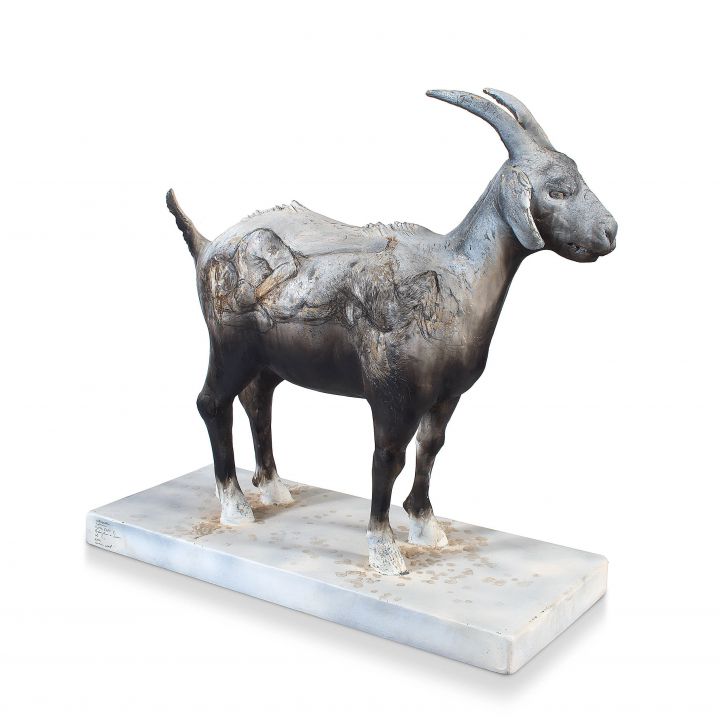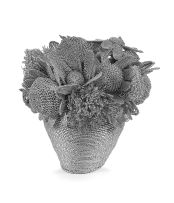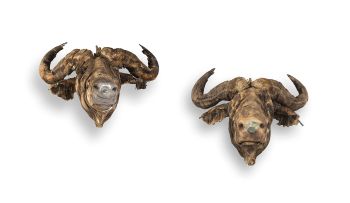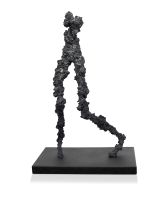Scapegoat
Diane Victor and Ruhan Janse van Vuuren
Incl. Buyer's Premium & VAT
About this Item
signed, dated 2012, numbered 1/1 and inscribed with the title onthe base
Notes
The word 'scapegoat' is an English translation of the Hebrew word, azazêl. In the Bible, Leviticus 16:8 mentions two goats: one for God and one for Azazel. These goats symbolically carry the blame for the sins of humankind, and are ritually sacrificed: the one, slaughtered at the High Temple on the Day of Atonement in ancient Judaism; the other, the one for Azazel, sent into the wilderness to die, thereby eradicating all the sins in a socio-psychological sense.
In many ways, Azazel is the more interesting of the two scapegoats. He is considered to be one of the fallen angels, but also, according to Enoch 8:1, "Azazel taught men to make swords, and knives and shields and breastplates, and made known to them the metals of the earth and the art of working them, and bracelets, and ornaments, and the use of antimony, and the beautifying of the eyelids, and all kinds of costly stones and all colouring tinctures." In short, Azazel was an artist, even, possibly, the pagan god of artistry.
Looking at Diane Victor's sculpture, Scapegoat, with all of this information in mind, one soon sees the brilliance of the work: an artist paying homage to one of the gods of the arts. The most interesting aspect of this sculpture though, is the carved/engraved image of a reclining figure, half-man, half-animal, that Victor incised with a knife into the soft metal alloy on the side of the goat form. This is another mythical creature; the Greek satyr, a male nature spirit with the head and torso of a man and the legs and hooves of a goat. Satyrs were considered to be ribald creatures fond of wine, music, dancing and carousing with women. They were renowned for their attempts to seduce or rape nymphs and mortal women alike, hence the exaggerated penis depicted in this work, although they usually had little success.
Victor's Scapegoat suggests that the mythical satyr is still all too present in our own society in the contemporary form of the sex pest or abuser, somebody who should be ritually banished to the wilderness. She does not, however, occupy the moral high ground in this work. Rather, she holds up a mirror to society, reflecting some of its sins in the dull surface. And in essence this self-reflection, this dim reflection in a mirror, is characteristic of much of Victor's artistic practice.
View all Diane Victor and Ruhan Janse van Vuuren lots for sale in this auction








